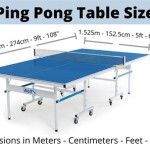Vegetable Garden Design Plans: Essential Aspects
Creating a successful vegetable garden requires careful planning and design. An effective design will maximize space utilization, enhance crop growth, and minimize maintenance efforts. Here are some essential aspects to consider when developing your vegetable garden design:
1. Site Selection
Choosing the right location for your garden is crucial. Consider factors such as sunlight exposure (most vegetables need 6-8 hours of sunlight per day), soil quality, drainage, and accessibility. Avoid areas with poor drainage or excessive shade.
2. Garden Layout
Determine the shape and size of your garden based on available space and the number of vegetables you plan to grow. Consider crop rotation to maintain soil health. Plant taller plants (e.g., corn, tomatoes) towards the back or edges to avoid shading shorter ones.
3. Companion Planting
Companion planting involves growing compatible plants together to enhance growth and deter pests. For example, planting basil near tomatoes repels insects, while carrots and onions benefit from each other's pest-control properties.
4. Trellising and Support
For climbing plants like tomatoes, beans, and cucumbers, consider using trellises or other support structures. This improves air circulation, prevents disease, and increases yield.
5. Water Management
Plan for adequate watering. Consider installing drip irrigation or soaker hoses to deliver water directly to plant roots, conserving water and minimizing evaporation.
6. Pest and Disease Control
Prevention is key. Incorporate natural pest and disease control measures such as companion planting, organic mulches, and beneficial insects. Consider crop rotation to reduce disease buildup.
7. Aesthetics
While functionality is essential, don't forget about aesthetics. Consider the visual appeal of your garden by incorporating different plant heights, textures, and colors. Intermix flowers and herbs to attract pollinators and enhance visual interest.
8. Soil Health
Healthy soil is the foundation of a thriving garden. Incorporate organic matter like compost or manure to improve soil structure, fertility, and water retention. Test your soil regularly and amend as needed.
Conclusion
By considering these essential aspects, you can create a well-designed vegetable garden that maximizes productivity, enhances aesthetics, and sets you up for success. Remember to adapt the design to your specific needs and preferences, and enjoy the fruits of your labor all season long.

Planning Your Vegetable Garden Mapping The Beds

How To Design The Perfect Vegetable Garden Layout Plant

19 Vegetable Garden Plans Layout Ideas That Will Inspire You Small Gardens Design

Vegetable Garden Layout Planning Bonnie Plants

Small Vegetable Garden Ideas Gate

19 Vegetable Garden Plans Layout Ideas That Will Inspire You Planning Plan

Vegetable Gardening For Beginners The Basics Of Planting Growing Old Farmer S Almanac

7 Vegetable Garden Layout Ideas To Grow More Food In Less Space

Vegetable Garden Layout 7 Best Design Secrets A Piece Of Rainbow

How To Plan A Vegetable Garden Design Your Best Layout
Related Posts








